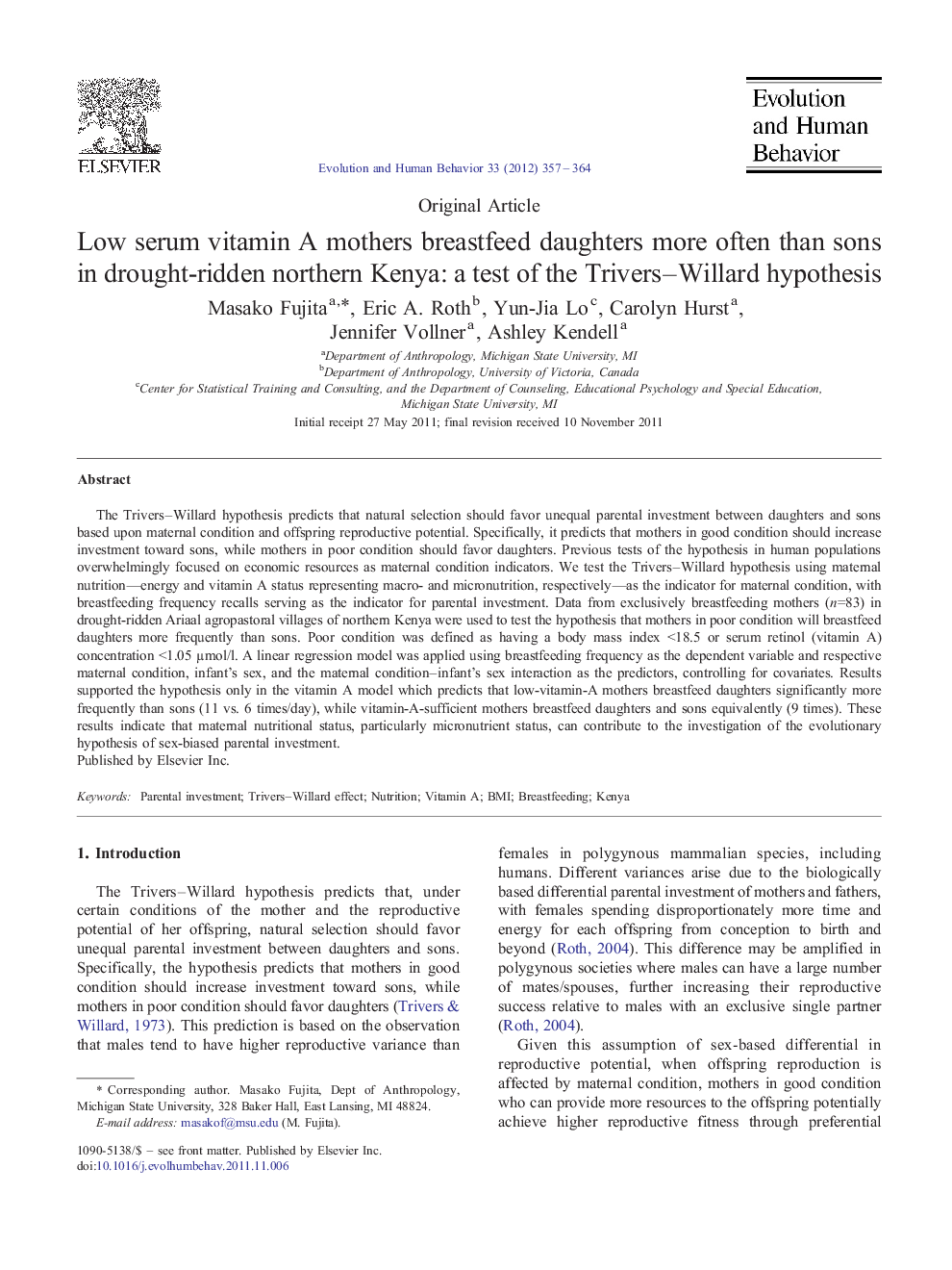| کد مقاله | کد نشریه | سال انتشار | مقاله انگلیسی | نسخه تمام متن |
|---|---|---|---|---|
| 943379 | 925463 | 2012 | 8 صفحه PDF | دانلود رایگان |

The Trivers–Willard hypothesis predicts that natural selection should favor unequal parental investment between daughters and sons based upon maternal condition and offspring reproductive potential. Specifically, it predicts that mothers in good condition should increase investment toward sons, while mothers in poor condition should favor daughters. Previous tests of the hypothesis in human populations overwhelmingly focused on economic resources as maternal condition indicators. We test the Trivers–Willard hypothesis using maternal nutrition—energy and vitamin A status representing macro- and micronutrition, respectively—as the indicator for maternal condition, with breastfeeding frequency recalls serving as the indicator for parental investment. Data from exclusively breastfeeding mothers (n=83) in drought-ridden Ariaal agropastoral villages of northern Kenya were used to test the hypothesis that mothers in poor condition will breastfeed daughters more frequently than sons. Poor condition was defined as having a body mass index <18.5 or serum retinol (vitamin A) concentration <1.05 µmol/l. A linear regression model was applied using breastfeeding frequency as the dependent variable and respective maternal condition, infant's sex, and the maternal condition–infant's sex interaction as the predictors, controlling for covariates. Results supported the hypothesis only in the vitamin A model which predicts that low-vitamin-A mothers breastfeed daughters significantly more frequently than sons (11 vs. 6 times/day), while vitamin-A-sufficient mothers breastfeed daughters and sons equivalently (9 times). These results indicate that maternal nutritional status, particularly micronutrient status, can contribute to the investigation of the evolutionary hypothesis of sex-biased parental investment.
Journal: Evolution and Human Behavior - Volume 33, Issue 4, July 2012, Pages 357–364